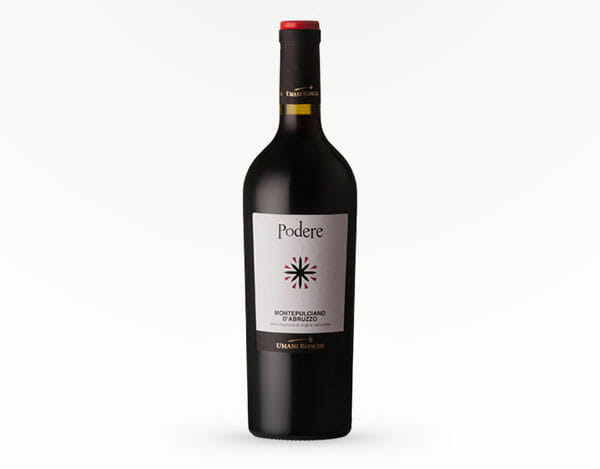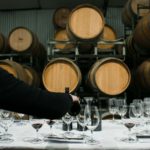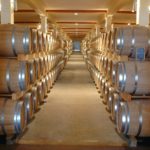Every wine lover knows some of the most incredible wines in the world hail from Italian wine regions such as Piedmont, Barolo, and Veneto. Abruzzo, however, is the best little wine region you may not have heard of. It’s off the beaten path and is not very touristy, which is part of its charm.
Abruzzo produces incredible wines utilizing some ancient traditional wine methods, along with some modern technology. One sip of an Abruzzo wine will transport you to the gorgeous Italian countryside.
What are Abruzzo wines?
Abruzzo wines are produced in Abruzzo, Italy, a mountainous coastal region along the central coast of the Adriatic sea. Abruzzo is part of the greenest region in Italy and offers beautiful beaches and rolling hills as far as the eye can see. Nestled in those rolling hills are some incredible wineries producing unique and flavorful wines.
Abruzzo is one of the oldest known wine-growing regions in the world. What makes Abruzzo unique is the variety of different ecological landscapes present within the region. Abruzzo is bordered by the Apennines mountain range to the North, which buffers against storms, and provides conditions similar to the famous central Italian wine regions of Tuscany and Marche. To the east, Abruzzo is bordered by the Adriatic sea, which provides a more mild, Mediterranea climate similar to wine regions like Calabria and Sicily.
Abruzzo is known for growing a variety of different wine grapes. Their two most dominant are the Montepulciano grape and the white Trebbiano d’Abruzzo grape. However, they also grow lesser-known varieties such as Passerina, Cococciola, and Pecorino.
The Montepulciano grape is one of the most widely planted grapes in Italy. It’s a very versatile grape and can make a variety of different styles of wine. It can be vinified and aged in stainless steel to make a simple, fresh wine that focuses on the transparency of the fruit. Montepulciano wines can be aged in casks or barriques to create incredible depth, concentration, and complexity.
Another thing that makes Abruzzo unique is that the region is dominated by cooperatives. It’s estimated that 80% of wines from Abruzzo are made by coops, many of which are located in warmer areas of the region like Chieti. Some of the best coops include Tollo and Citra.
Types of Abruzzo wines
Abruzzo wines aren’t made in one specific type or style. There are tons of different styles of wine made in Abruzzo, from extremely high-end, expensive wines to more fun, fruity, inexpensive ones. One of the best things about Abruzzo is the vastly different landscapes within the region, which allow for the production of so many different wine styles. Any wine lover is sure to find something they love here, no matter their tastes.
Montepulciano d’Abruzzo
Montepulciano d’Abruzzo wines are medium-bodied red wines. They’re the most famous wine made from predominantly Montepulciano grapes. Montepulciano d’Abruzzos are typically made with a blend of Italian red grapes and contain up to 15% Sangiovese.
Montepulciano d’Abruzzos are dry, with high tannins and acidity levels. They’re a great complement to savory foods such as beef briskets, roasted meats, baked vegetables, and pasta bolognese, as the higher acidity level helps to cut through the rich flavors.
There are five viticultural subzones that produce Montepulciano d’Abruzzo wines. Each of the subzones produces wines with slightly different characteristics and flavors. You’ll find the sub-region listed on the label of the bottle.
- Alto Tirino: The wines that come from this small countryside area are usually full-flavored, ruby red, and offer robust berry flavors.
- Casauria (Terre di Casauria): This is a quality wine production area that makes ruby red wines with harmonious, ripe fruit flavors
- Teate: The Chieti province is part of this sub-region. Chieti is the 5th largest wine-producing province in Italy. The wines produced here have red fruit and spice flavor notes.
- Terre dei Peligni: This sub-zone is found in the foothills of the Apennines. The red wines made with this region’s Montepulciano variety usually have a delicate berry and herbal aroma.
- Terre dei Vestini: This area includes the lands on the Adriatic coast and the inland hills of the Pescara province. The wines made in this subregion are incredibly unique, with a velvety taste and slight vegetal aroma.
There are three main types of Montepulciano d’Abruzzo wines produced within these sub-regions. They are:
- Montepulciano d’Abruzzo DOC: To be a certified Montepulciano d’Abruzzo DOC, wines have to comply with certain rules. For example, they must be made with at least 85% Montepulciano grapes and up to 15% of Sangiovese for the remainder. Wines must age for at least five months before release, and bottles labeled Riserva should age for at least two years.
- Montepulciano d’Abruzzo Colline Teramane DOCG: Montepulciano d’Abruzzo Colline Teramane DOCG wines are from the Teramo province appellation. This appellation was first certified as DOC in 1995, but qualified for a DOCG in 2003. These wines must be made with at least 90% Montepulciano grapes, and up to 10% Sangiovese.
- Cerasuolo d’Abruzzo DOC: These are rosato wines, a type of rosé. Cerasuolo d’Abruzzos are a lighter cherry red, with lower tannin and acidity levels. The common flavor notes include cherry, strawberry, orange peel, and cinnamon.
Great examples of Montepulciano d’Abruzzo bottles to try include Podere Montepulciano D’abruzzo, Vallevó Montepulciano D’Abruzzo, and Cornacchia Montepulciano d’Abruzzo.
Trebbiano d’Abruzzo
Trebbiano d’Abruzzo is a dry white wine and is the only DOC in Abruzzo specializing exclusively in white wine. It must be made with at least 85 to 100 percent of Trebbiano Toscano or Trebbiano Abruzzese or a combination of the two grapes. In addition to the two varieties of Trebbiano grapes, Cococciola, Passerina, and white Malvasia can also be used.
Roughly 14 million liters of Trebbiano d’Abruzzo are produced every year. Trebbiano d’Abruzzo wines are golden in color and are typically dry but fruit-forward. They usually offer delicate bouquets and crisp acidity. Some producers use barrels to mature or age their Trebbiano d’Abruzzo, which helps develop greater complexity, depth, and body.
Great wines to try include Azienda Agricola Valentini Trebbiano d’Abruzzo, Cirelli Trebbiano d’Abruzzo, and Masciarelli Trebbiano d’Abruzzo.
Controguerra
Controguerra is a DOC/DOP located at the very northern end of Abruzzo. This region produces a huge variety of wines, from red, white, and rosé blends to sparkling wines and sweet “passito” wines. The region became a DOC back in 1996 when winemakers from the area helped bring attention to the region by making wines with international grapes such as Cabernet Sauvignon, Chardonnay, and Merlot.
The Controguerra region is unique because they produce a huge variety of amazing wines in different styles, all of which must follow strict production standards. Some of these wines include:
- Passerina: A white wine marked by white citrus flavors. Must contain at least 85% Passerina grapes.
- Pecorino: A dry, mineral white wine with an elegant floral bouquet of acacia and jasmine. Pecorino wins from Controguerra must be made with at least 85% Pecorino grapes.
- Bianco: The standard white wine of the region can be produced in a variety of different styles and sweetness levels. The only requirement is that it must contain a minimum of 50% Trebbiano d’Abruzzo grapes and a minimum of 10% Passerina.
- Rosato: The region’s rosé wine must be made from a minimum of 70% Montepulciano grapes.
- Rosso: The region’s premier red wine, Rosso, must be made from at least 70% Montepulciano grapes.
- Spumante Metodo Classico: Controguerra’s main sparkling wine, whose name translates to “sparkling classic method.” This wine must contain 60% Trebbiano grapes, while the other 30% must be made up of Chardonnay, Pecorino, and/or Verdicchio grapes
- Passito Rosso: A sweet rosé wine made from grapes that have been dried in the sun. Passito Rosso must contain at least 70% Montepulciano grapes.
- Passito Bianco: The region’s sweet white passito wine. Must be made from at least 60% Malvasia, Passerina and/or Trebbiano grapes.
The takeaway
The Abruzzo wine region is one of Italy’s best-kept secrets. Nestled along the central coast, Abruzzo is off the beaten path and doesn’t get as many tourists as other regions. Abruzzo is producing some absolutely amazing wines and an incredible variety of them at that. One taste of Abruzzo wine will help you understand why we consider it one of the most underrated wine regions in the world.
For all your wine delivery needs, you can count on Saucey. We offer an incredible selection of wines, beers, and liquors from all around the world. Treat yourself, and order from Saucey tonight.




